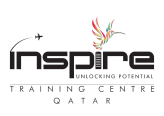Objectives
At the completion of this course, students should be able to:
1. List the revenue centers in and revenue accounts used by a hotel, and explain and apply hotel
revenue accounting procedures.
2. Describe and implement basic internal control forms and procedures used in food and
beverage sales.
3. Define and give examples of financial reporting centers.
4. List the types of expenses incurred and expense accounts used in a hotel, and demonstrate
hotel accounting procedures for expenses and bad debts.
5. Calculate cost of sales.
6. Explain the purpose of a uniform system of accounts, and describe the purpose of and
formats for account numbering systems.
7. Summarize the purposes of and formats for hotel departmental financial statements.
8. Describe procedures for hospitality payroll accounting (including requirements for tipped
employees), and explain major payroll deductions and taxes.
9. Describe and apply accounting procedures applicable to the acquisition, depreciation, and
disposal of property and equipment.
10. Describe and apply accounting procedures applicable to the acquisition and amortization of
intangible assets, and recognize non-amortizable intangible assets.
11. Explain the purpose of, and prepare, various formats of income statements, including
common-size and comparative formats.
12. Interpret and analyze income statements using ratios, and list the commonly used income
statement ratios.
13. Explain the purpose of, and prepare, various formats of balance sheets, including
common-size and comparative formats.
14. Interpret and analyze balance sheets using ratios, and list the commonly used balance sheet
ratios.
15. Explain the purpose, preparation, content, and format of the statement of cash flows.
16. Summarize the role of, criteria for selection of, and levels of service provided by an
independent certified public accountant.
17. Describe the purpose and preparation of consolidated financial statements.
18. Explain the purpose and content of an annual report, and describe how a reader can find and
interpret information in the report.
19. Define the various types of expenses and apply techniques to budget those expenses
effectively.
20. Use various methods to forecast sales.
21. Describe and use budgetary reporting and analysis techniques.
22. Outline the critical elements to be considered in financial decision-making.
23. Demonstrate proper procedures for cash management and planning.
24. Identify and describe several unique accounting concerns of casinos.
25. Describe and apply the various methods of inventory valuation, as well as how the
differences between the methods may affect the values derived.









